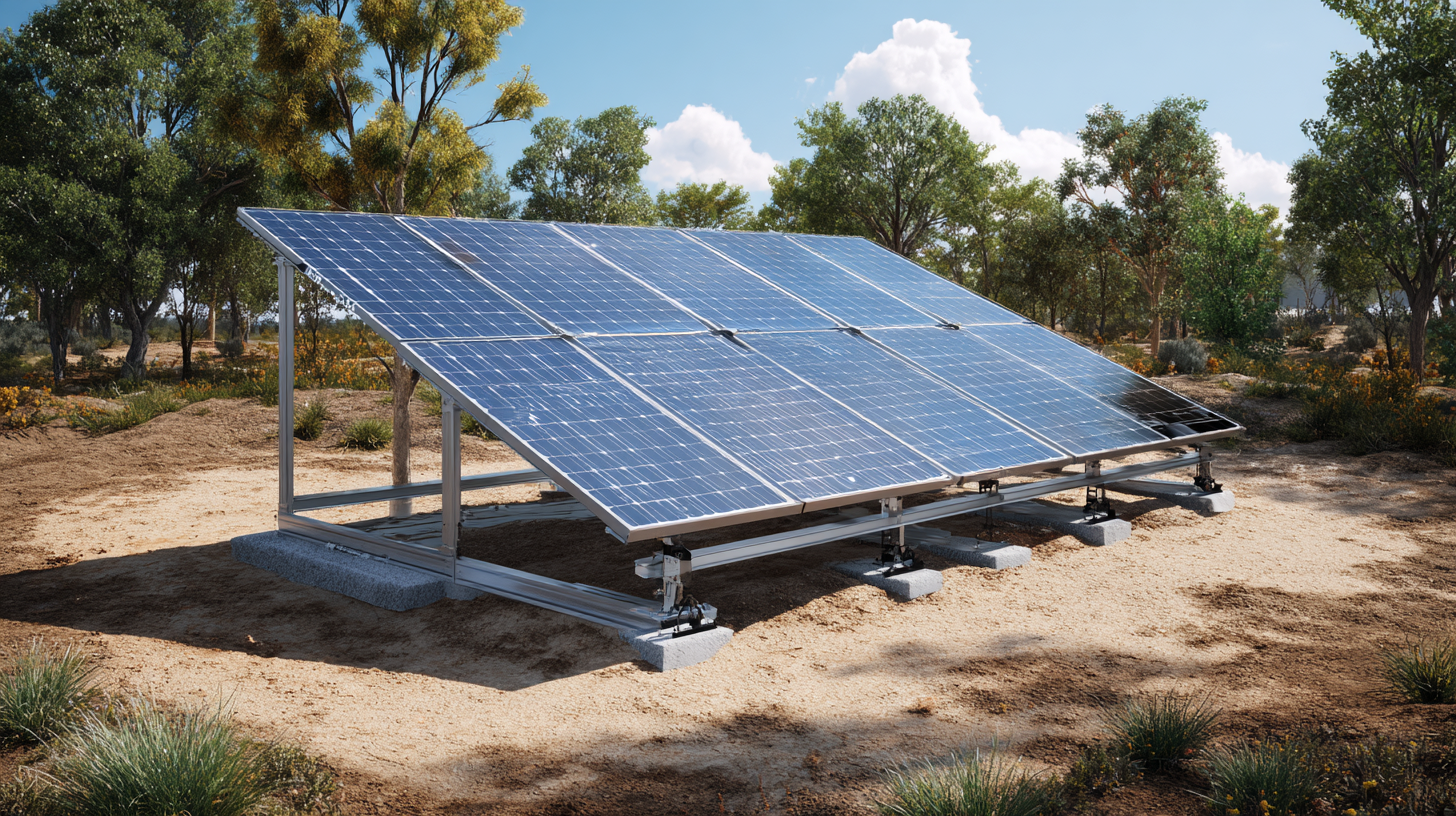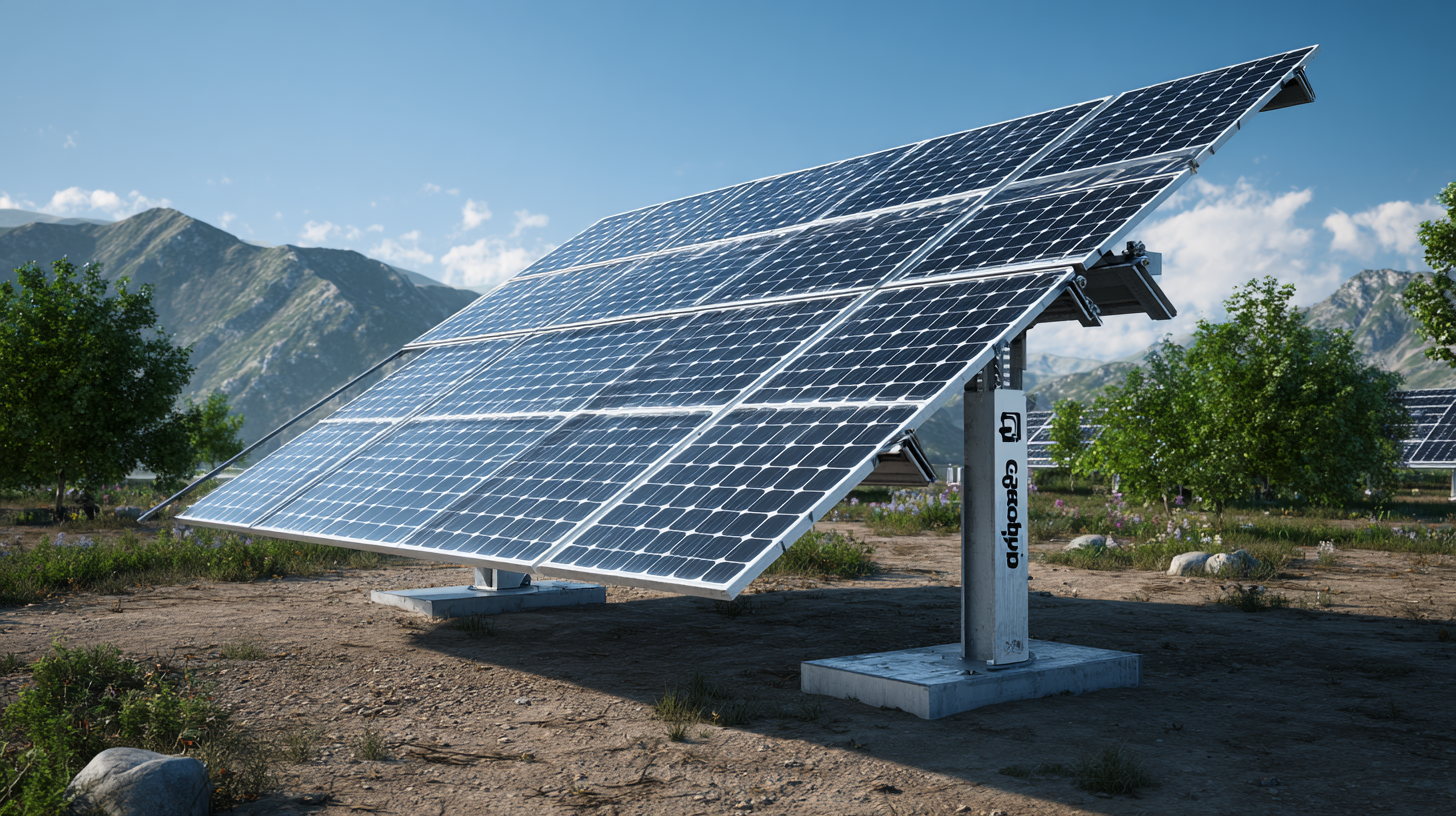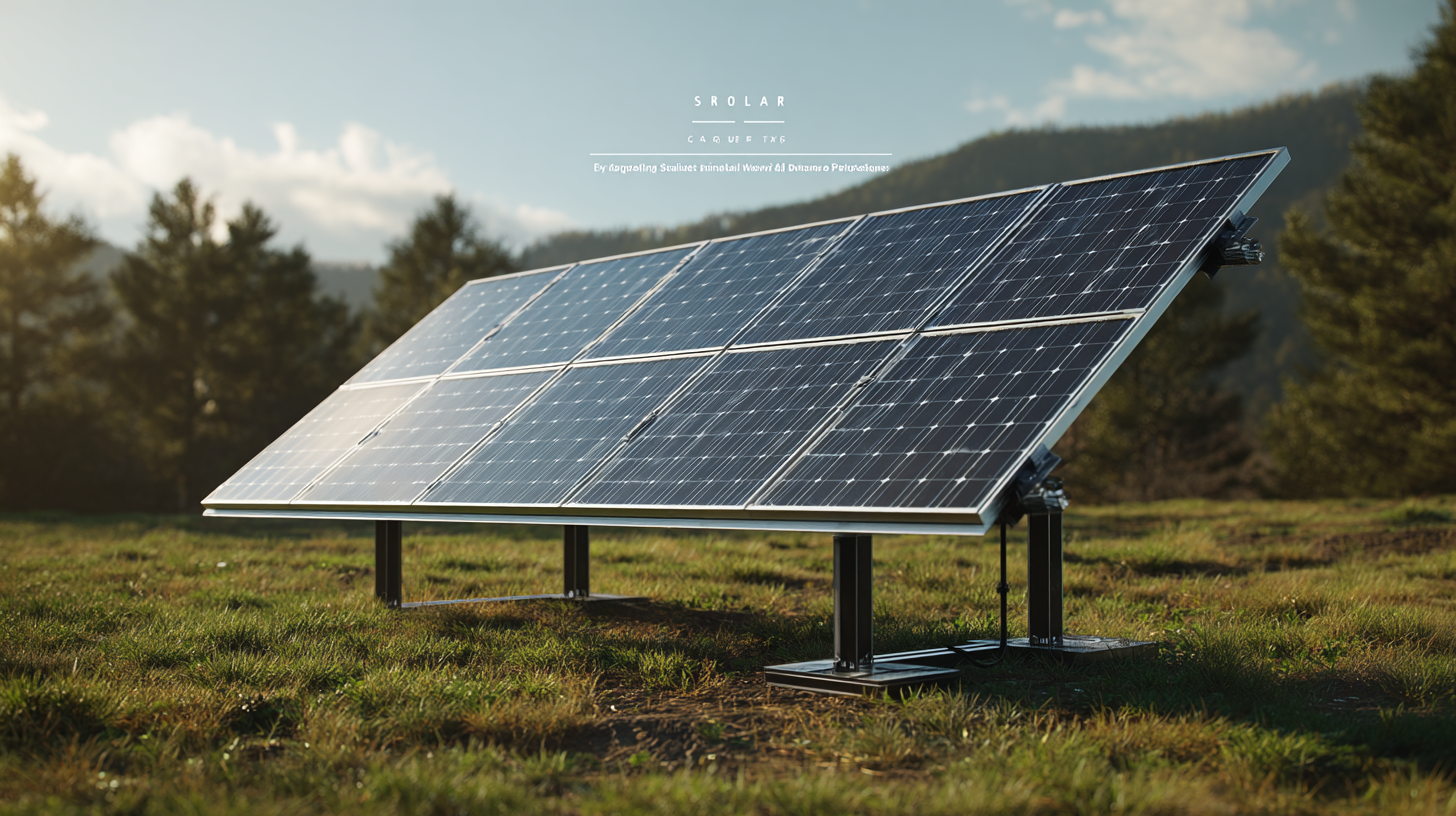The global shift towards renewable energy sources has heightened the demand for efficient solar solutions, with Solar Panel Ground Mounts emerging as a pivotal technology in this realm. According to a report by Wood Mackenzie, the global solar market is expected to grow by over 20% annually, reaching an installed capacity of 1,500 GW by 2025. This surge underscores the importance of innovative mounting solutions that can optimize solar panel performance in diverse geographical conditions. In particular, ground-mounted systems offer advantages such as increased stability, better land utilization, and the flexibility to adjust for optimal sun exposure. As Chinese manufacturers seek to expand their footprint internationally, emphasizing quality and reliability in Solar Panel Ground Mount solutions will be critical in capturing a competitive edge in the global market.

Ground mount systems for solar panel installations have increasingly gained attention as effective alternatives to rooftop setups, especially in scenarios where roofs are unsuitable or impractical. The Solar Energy Technologies Market Report from the U.S. Department of Energy highlights that ground-mounted installations accounted for approximately 20% of the total solar capacity in 2022. This shift indicates a growing preference for utilizing open land, which can accommodate larger systems without the restrictions that roofs impose.
Various alternatives to traditional ground mount systems are emerging, each designed to optimize efficiency and minimize land usage. For instance, dual-axis tracking systems, which adjust the panel orientation throughout the day, can increase energy production by up to 40% compared to fixed installations, according to a study by the National Renewable Energy Laboratory. Additionally, solar canopies, which provide shaded parking areas while generating solar power, are becoming popular due to their dual functionality and lower land footprint. These innovative solutions not only enhance energy yield but also support sustainability initiatives by utilizing vacant spaces effectively.
| Ground Mount Type | Material | Installation Cost ($/kW) | Land Requirements (sq. ft./kW) | Tilt Angle (degrees) | Lifespan (years) |
|---|---|---|---|---|---|
| Fixed Rack | Aluminum | 1,000 | 100 | 30 | 25 |
| Tracking System | Steel | 1,500 | 120 | 25 | 20 |
| Pole Mount | Aluminum / Steel | 1,200 | 80 | 20 | 25 |
| Ballasted Mount | Concrete | 1,100 | 150 | 30 | 30 |
When selecting a ground mount solution for solar panel installations, several key considerations come into play. First and foremost is the type of ground mount system—fixed tilt vs. adjustable. According to the Solar Energy Industries Association (SEIA), fixed tilt systems typically offer a lower upfront cost and simpler installation processes, while adjustable systems can optimize energy generation by changing angles throughout the year. On average, adjustable systems can increase energy production by 10-20% compared to their fixed counterparts, making them a worthy consideration for larger installations.
Another vital factor is soil type and geographic location. A report from the National Renewable Energy Laboratory (NREL) indicates that ground conditions greatly affect installation methods and cost-efficiency. For instance, rocky or unstable soil might necessitate additional anchoring solutions, which can raise both material and labor costs by up to 15%. Additionally, local climate and exposure to elements like wind and snow load also play a crucial role in determining the durability and longevity of the mounting system. Evaluating these variables ensures that the chosen ground mount solution not only meets structural requirements but also maximizes solar energy capture effectively.
When considering solar panel installation, alternative ground mount solutions can provide flexibility and efficiency tailored to diverse landscapes and requirements. This step-by-step guide navigates through the essential phases of installing these innovative ground mounts, ensuring a secure and effective setup.

The first crucial step is site assessment. Before installation, evaluate the land’s condition, sunlight exposure, and local regulations. Look for an unobstructed area with minimal shading to maximize solar gain. A well-chosen location not only enhances performance but also reduces maintenance issues.
Next, selecting the right mount design is vital. Options range from simple A-frames to more complex pole mounts. Consider factors such as soil type and wind loads when choosing materials. Tip: Use galvanized steel for durability and resistance to corrosion. Additionally, ensure proper angle and orientation for optimal sun exposure throughout the year, allowing your solar system to function at its highest potential.
When considering solar panel installations, selecting the right ground mount system can significantly influence both installation costs and overall energy efficiency. Traditional ground mount systems, typically using aluminum or steel frames, are widely recognized for their durability and capacity to withstand harsh weather conditions. According to the Solar Energy Industries Association (SEIA), the average cost of traditional ground mounts can range from $0.50 to $1.00 per watt, making them a reliable, yet sometimes costly option for large-scale solar farms.
On the other hand, innovative ground mount solutions, such as those using modular designs or tracking systems, are gaining attention for their potential cost-effectiveness and efficiency benefits. A report by the National Renewable Energy Laboratory (NREL) indicates that single-axis tracking systems can increase solar energy production by 20-30% compared to fixed systems, offering a substantial return on investment over their lifetime. Although initial costs for innovative systems may reach $1.50 to $2.50 per watt, their superior energy yield can offset the upfront expense, making them an attractive option for savvy solar investors looking to maximize long-term value.
When it comes to ground-mounted solar panels, maintenance plays a vital role in ensuring optimal performance and longevity. One of the key maintenance tips is to regularly inspect the panels and their mounting structures for any signs of wear or damage. Over time, dust, debris, and even snow can accumulate on the surface of the panels, blocking sunlight and reducing efficiency. A periodic cleaning, ideally using a gentle solution and soft brush, can help maintain their effectiveness, especially in regions with heavy dust or pollen.

Another essential aspect of maintenance is monitoring the electrical connections and wiring. Loose or corroded connections can hinder energy transfer, leading to decreased output. It’s advisable to conduct routine checks to ensure all components are securely connected and free from corrosion. Additionally, keeping the area around the panels clear of vegetation not only prevents shading but also minimizes the chances of pests or rodents interfering with the system. By adhering to these simple yet effective maintenance practices, you can ensure that your ground-mounted solar panels remain efficient and continue to generate clean energy for years to come.
